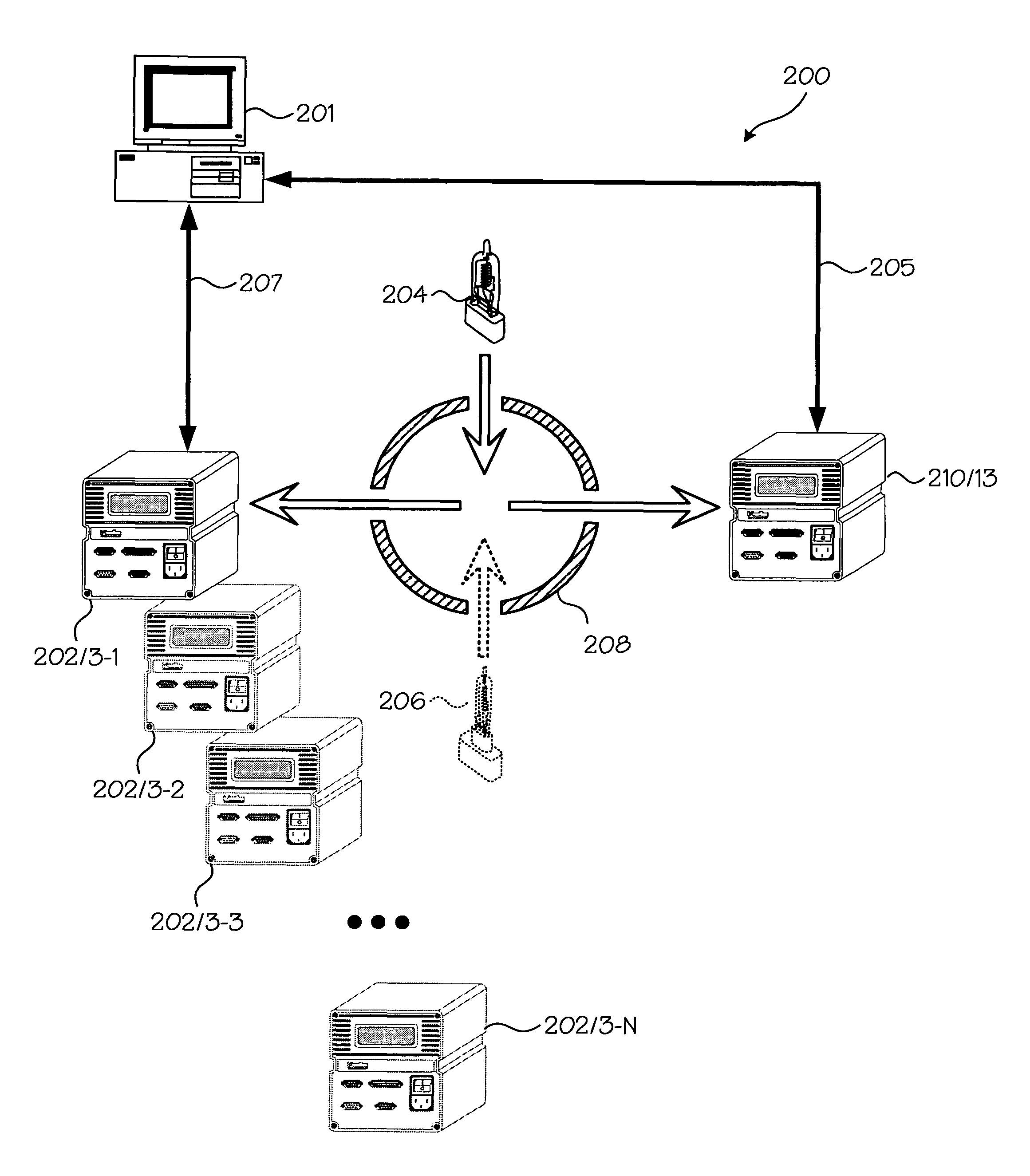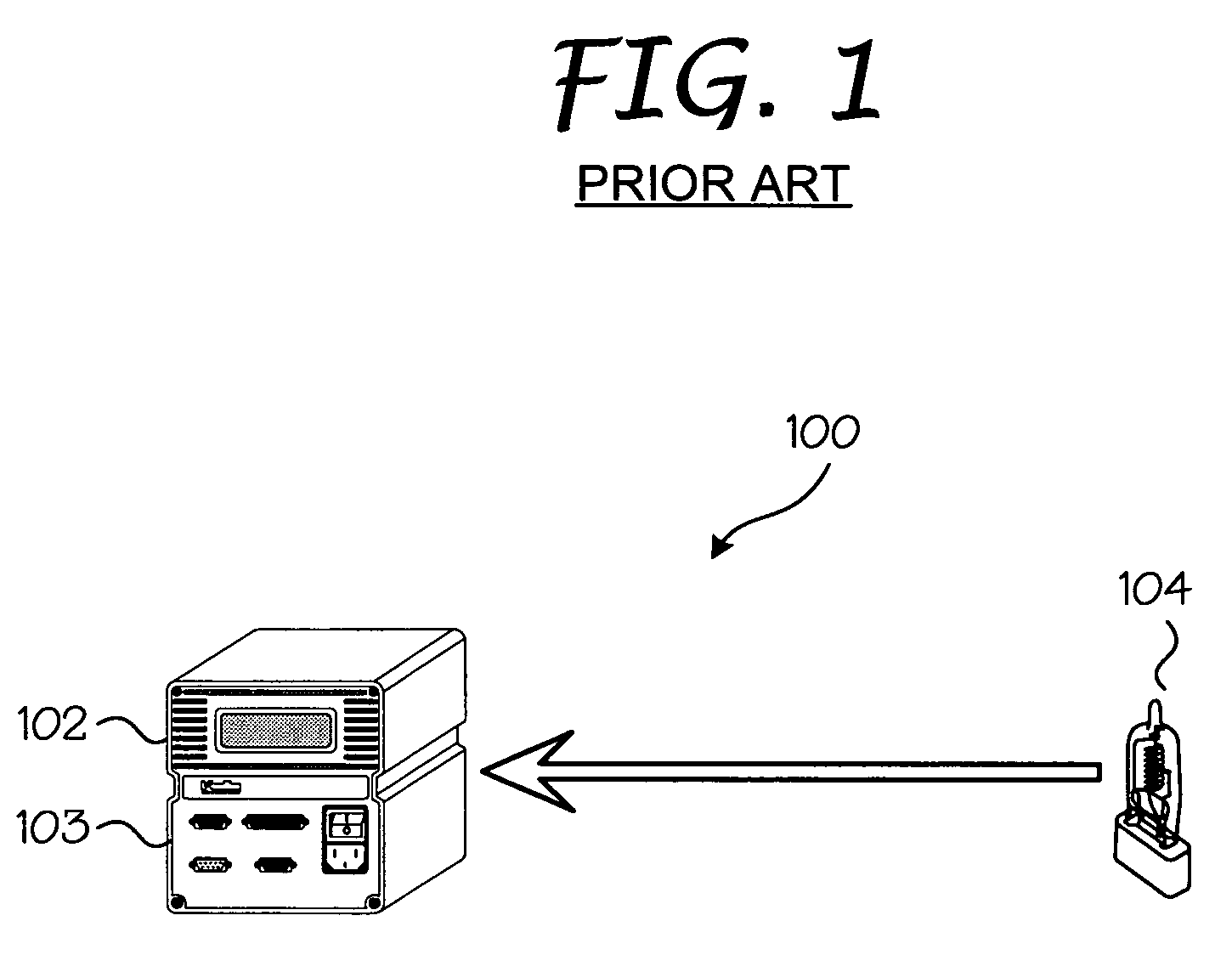Calibration of a radiometric optical monitoring system used for fault detection and process monitoring
a radiometric optical monitoring and fault detection technology, applied in the field of radiometric calibration of spectroscopy equipment, can solve the problems of affecting the implementation of these designs, affecting the recording spectrum, and affecting the quality of the measurement, etc., and achieve the effect of variable throughpu
- Summary
- Abstract
- Description
- Claims
- Application Information
AI Technical Summary
Benefits of technology
Problems solved by technology
Method used
Image
Examples
Embodiment Construction
Element Reference Number Designations
[0032]100: Prior Art Calibration System[0033]102: Production Spectrograph[0034]103: Detector[0035]104: Production Light Source[0036]200: Spectrograph Calibration System[0037]201: Spectrograph Calibration Module[0038]202: Production Spectrograph(s)[0039]203: Optical Detector Production Reference Light[0040]204: Source[0041]205: Calibrated Spectrograph Output Local Primary Standard[0042]206: Calibration Light Source Uncalibrated Spectrograph[0043]207: Output[0044]208: Integrating Sphere[0045]210: Reference Spectrograph[0046]213: Optical Detector[0047]300: Spectrograph Calibration System[0048]301: Spectrograph Calibration Module[0049]302: Production Spectrograph[0050]303: Optical Detector Production Reference Light[0051]304: Source[0052]305: Calibrated Spectrograph Output Local Primary Standard[0053]306: Calibration Light Source Uncalibrated Spectrograph[0054]307: Output[0055]308: Integrating Sphere[0056]310: Reference Spectrograph[0057]313: Optical...
PUM
 Login to View More
Login to View More Abstract
Description
Claims
Application Information
 Login to View More
Login to View More - R&D
- Intellectual Property
- Life Sciences
- Materials
- Tech Scout
- Unparalleled Data Quality
- Higher Quality Content
- 60% Fewer Hallucinations
Browse by: Latest US Patents, China's latest patents, Technical Efficacy Thesaurus, Application Domain, Technology Topic, Popular Technical Reports.
© 2025 PatSnap. All rights reserved.Legal|Privacy policy|Modern Slavery Act Transparency Statement|Sitemap|About US| Contact US: help@patsnap.com



